Whether you are using top-of-the-range equipment or a bargain basement setup, this time of year is likely to be one of the more productive for noc-mig, with a wide range of species on the move during the hours of darkness. Our current situation is a bizarre one; many hours are having to be spent at home when we should all be out enjoying migration in action, but instead many birders have pretty much inverted their normal birding routine and turned to the night for answers since lockdown began.
This has itself generated more unanswered questions and even more of those random noises I alluded to in my previous article. Lately, Twitter and WhatsApp groups have been inundated with queries on all manner of things, from Barn Owls to barking dogs. Although we're likely to be through the main wader passage now, there's still a good chance of stragglers and, as we head further into the year, some will begin to return south. Species such as European Nightjar and Common Quail will begin to feature too, although in the early part of May they're likely to be migrants; later on they may be on exploratory or display flights, which can see them travel a little further afield from traditional territories.
Covered in this article are the species you're most likely to encounter in the coming weeks. Some of you may be really lucky and see yourself gripped off by your own recording gear – in fact, as I write this, I've just processed a night recording which included a Roseate Tern, a species I would never expect to record over my garden in Weymouth! Fortunately this is a bird I am familiar with as I work in close proximity to a Common Tern colony. One of the things I find when trying to identify sounds at night is to try and place the sound; if it sounds like a wader or tern, shut your eyes and imagine yourself on a shoreline surrounded by such birds – it really works! Headphones are essential when processing recordings as it'll cut out all background noise and immerse you into the recording.
Roseate Tern over Weymouth on 2 May 2020. Note the excitable, fast-paced and somewhat Spotted Redshank-like ki-rick call (Joe Stockwell).
Confusion species continue at this time of the year and can cause nightly ID issues. Two birds that are regularly mixed up are Little Grebe and Whimbrel – and for good reason, too. The calls sound very similar indeed and, despite the former being much more common inland, it's just as likely that the latter would be flying over your garden at this time of year.
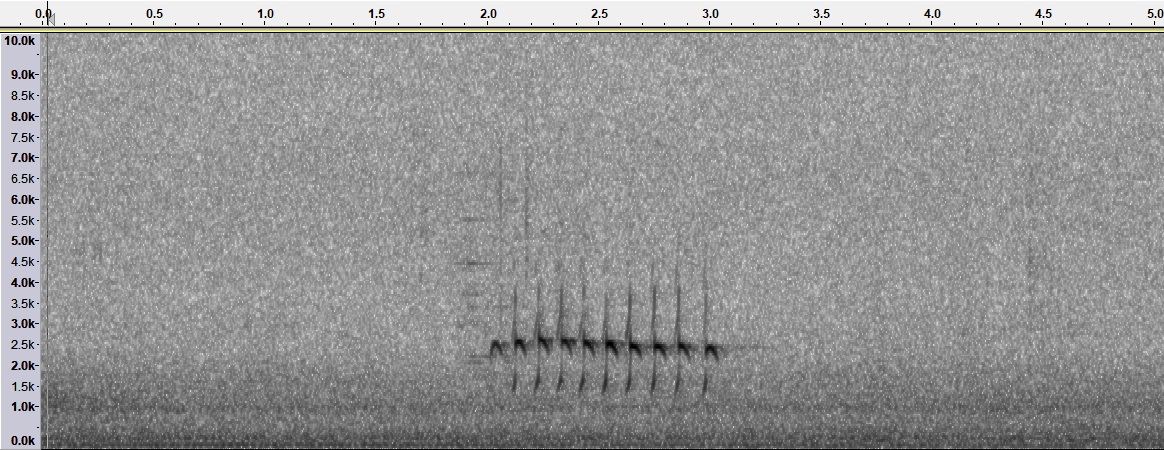
Nocturnal flight call of Whimbrel is a fast whistled 'pepepepuepue'. Sometimes short calls will be made ('pe' or 'pepe') and this is likely when more than one bird is present. However, more often than not a series of longer calls will also be made (Joe Stockwell).
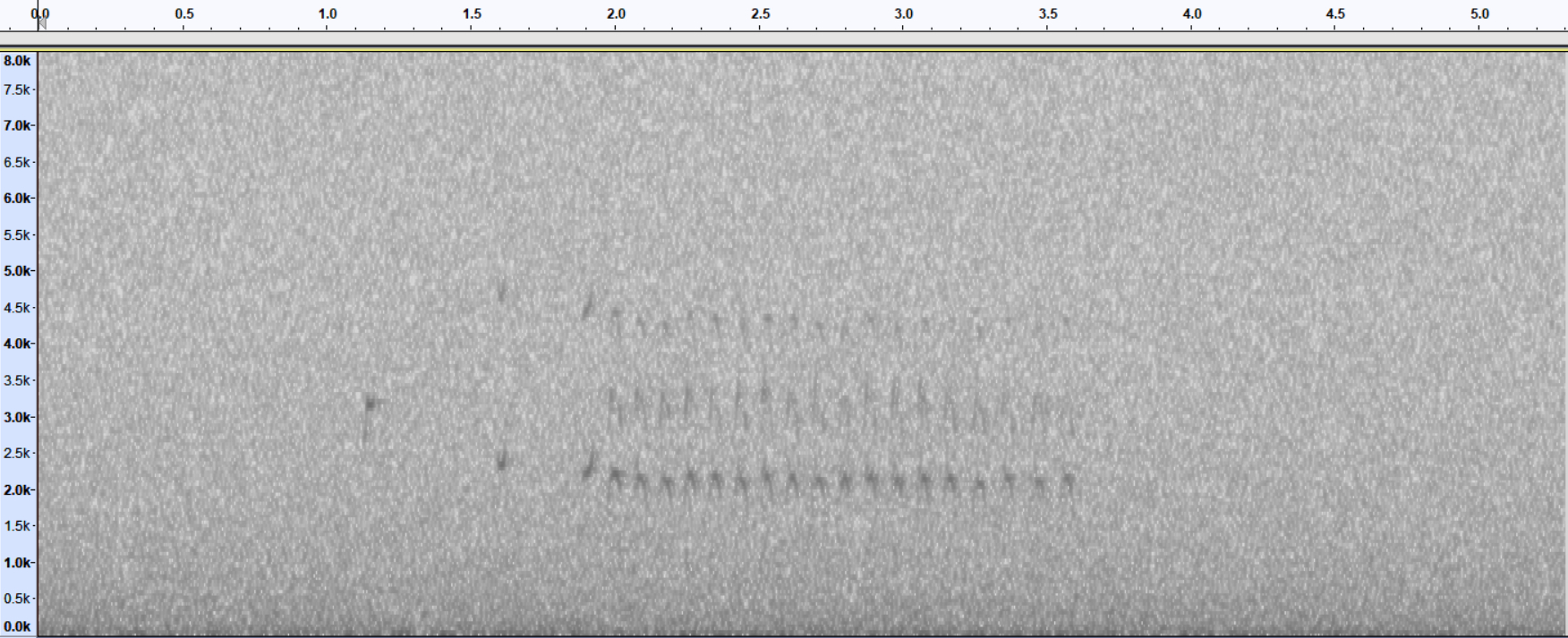
With nocturnal flight call of Little Grebe, the key thing to note is that, although they sound superficially similar, before the whistled 'pipipipipipipi' call there are a series of higher pitched, individual 'pi' notes preceding it. This separates Little Grebe from Eurasian Whimbrel, though on faint recordings the single 'pi' calls can sometimes not be heard, making ID tough (Ed Stubbs).
Whimbrel also has a tendency to burst into song in the middle of the night which, although it could be confused with Eurasian Curlew, is much more drawn out and bubbling, lacking the repetitive pulses of song. The below clip also demonstrates the perils of urban recording, with a couple in mid-conversation!
As we move into the latter weeks of spring, the range of species does tend to dwindle somewhat. Those that you do encounter, though, may well be that little bit more special. For example, how many people have European Nightjar on their garden list? This is a species which not only migrates at night but also, during feeding forays, may travel great distances. Studies have shown them to move several kilometres at night away from their territories ...
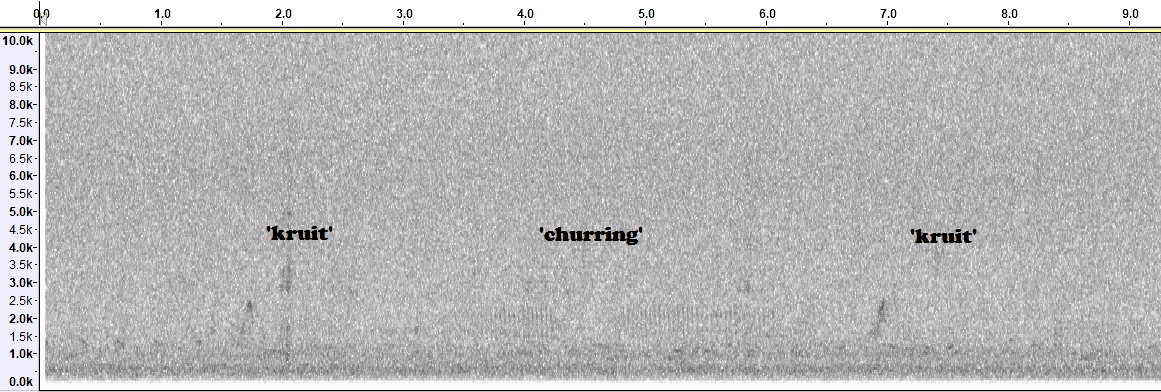
These calls of a European Nightjar, as it migrates over Weymouth, include two 'kruit' calls and a bust of churring song. It's unlikely that a migrant bird will always sing, but as this bird proves, if it fancies a little 'chur' en-route, then why not? As you can see from an enhanced spectrogram, it takes a high level of concentration to pick some of the calls out (Joe Stockwell).
Another species which may be encountered on migration, but also during a spate of wandering, is Common Quail, a bird so many have heard but never seen. Below I have included calls recorded during the day as they're exactly the same as those made at night. Personally, Common Quail is on my most-wanted list for the garden, having heard them whizzing around overhead just after 1 am in France last summer. For an exceptionally detailed analysis of nocturnal Common Quail, including the less encountered mawah calls, please take a look at Magnus Robb's fabulous work here.
Terns can be expected any time through May. Common, Arctic Tern and Sandwich Tern are recorded over my garden with fair regularity, but separating the former two can be tricky and, especially if they're in a mixed flock, I tend to record them like I would on a seawatch as Common/Arctic – it's a far safer bet and, at the end of the day, we don't have to identify everything; only if it's clear that I can identify calls from one another or both species will I record them separately.
You can hear that, if the flocks of terns are large enough, the calls almost all merge. This flock took nearly seven minutes to pass by and produced well in excess of 100 calls. I managed to identify only four calls from an Arctic Tern though.
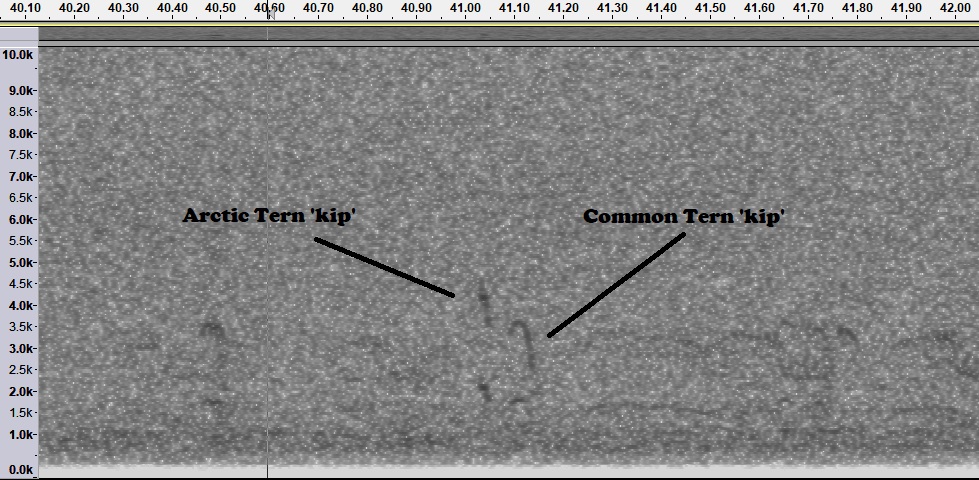
The above spectrogram is annotated to show the two species 'kip' calls. I'd have been nowhere without the original Sound Approach to Birding book, though, as it seperates Common and Arctic Terns in great detail. You can see the Arctic Tern call is higher pitched than that of Common Tern (Joe Stockwell).
It's a whole lot easier when they fly right over the house! Below is a mixture of kip and gyaarrrr calls from passing Common Terns.
Sandwich Tern is probably as frequent as Common Tern where I record, but I've no doubt this would be an inland gem for many. Their nocturnal flight calls are very much the same as during the day, but nevertheless I can imagine the excitement of scrolling across this from a landlocked garden recording ...
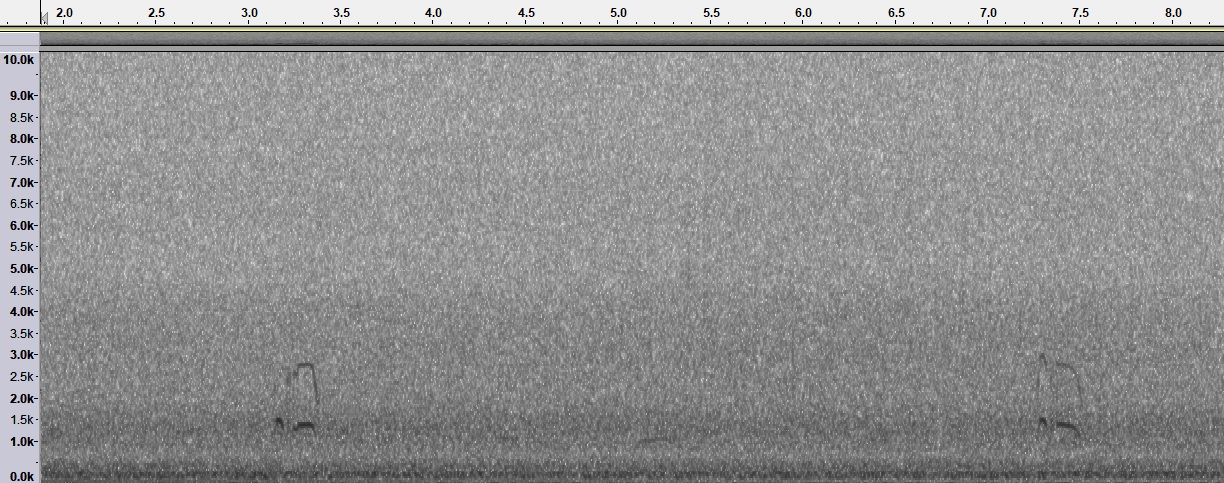
Nocturnal flight calls of Sandwich Tern, mostly just a repeated 'kerreck', but also a little bit of interaction between birds can be heard (Joe Stockwell).
One rather strange occurrence that's being picked up during spring and summer nocturnal recording sessions is singing passerines. We all know that Dunnocks, European Robins, Cetti's Warbler and others feel the need for a random burst of song in the night, but it's become apparent that Sylvia warblers also partake in a little moonlight serenade as well. Birds which are on migration may stop for a short period, belt out a bit of song and then head on again. It's not yet fully understood whether these birds are in fact stopping or singing in flight, though I personally believe it's the former.
Blackcap singing during nocturnal migration at 00:30 near Brussels, Belgium, 2 May 2020 (Frederik Fluyt).
The recent uptake in noc-mig been an incredibly steep learning curve for many, but I hope future articles will continue to aid both those who are new to nocturnal recording or those who merely need a refresher on those infrequently encountered species. I'm still learning something new pretty much everytime I record – for example I think I'm up to 20 different dogs barking in my local area now!

